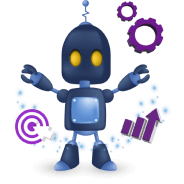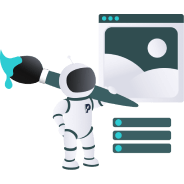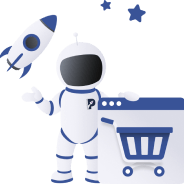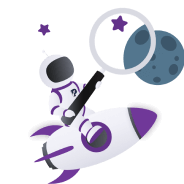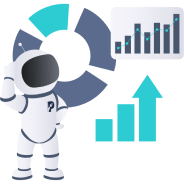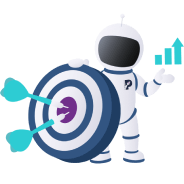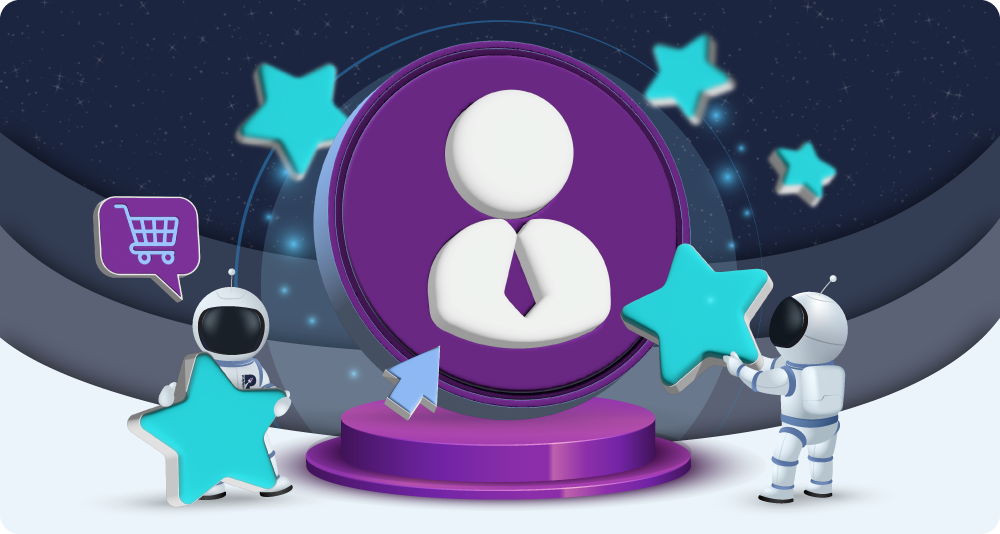

How Buyer Personas Can Elevate Your Marketing Campaigns
We’ve written about how you create buyer personas for your business, but what about using buyer personas for your marketing campaigns? It’s good to have a deep understanding of your target market, but it’s even better if you know how to use that information to benefit your marketing efforts.
Buyer personas make this process easier because you don’t have to sift through large amounts of data every time you want to make a decision about a campaign. Sure, when you first create a buyer persona, you have to examine your customer data carefully. But once that’s done, you have a reliable “character” to help with every marketing, sales, and advertising campaign until the market changes (which could be more than ten years down the line!). So, it’s a reliable investment.
Rather than looking at an endless spreadsheet of statistics, you can use something more accessible and instantly recognisable: the buyer persona.
So, how does one gain valuable insights from a buyer persona once it’s been created? And how can every single marketing campaign benefit from one? Let’s dive in:
How can my marketing campaign benefit from a buyer persona
Targeted messaging
Buyer personas provide a clear understanding of your audience’s needs, desires, and pain points. With these insights, you can craft messages that resonate deeply, ensuring that your marketing communications are always relevant and compelling.
Efficient resource allocation
Instead of spreading your budget thinly across various channels and tactics, buyer personas allow you to focus on what really matters to your audience. This ensures a higher return on investment (ROI) as you’re investing in strategies that have the highest likelihood of success.
Personalised customer experience
Personalisation is key when consumers are often overwhelmed by marketing materials. Buyer personas enable businesses to tailor content, offers, and interactions to specific audience segments, enhancing their experience and increasing engagement and loyalty.
Improved product and service development
By understanding your audience’s needs and challenges through buyer personas, businesses can identify gaps in the market or areas for improvement in their offerings, leading to better products and services.
Enhanced customer loyalty
When customers feel understood and catered to, they’re more likely to stay loyal to a brand. Buyer personas help businesses anticipate and meet the evolving needs of their customers, fostering long-term relationships.
Data-driven decision making
Instead of relying on gut feelings or broad market trends, buyer personas provide concrete data about your audience. This data-driven approach ensures that marketing decisions are grounded in reality and more likely to succeed.
Streamlined content strategy
Knowing your audience’s preferences, from the type of content they consume to the platforms they frequent, allows for a more focused and effective content strategy. Whether it’s blog posts, videos, or podcasts, every piece of content can be tailored to resonate with your target audience.
Incorporating buyer personas into your marketing strategy is not just best practice; it’s a necessity. By understanding and catering to the specific needs and desires of your audience, businesses can craft more effective, impactful, and successful marketing campaigns. So, how can one go about this?
How to use your buyer persona to guide your marketing campaign
When you’re coming up with a new marketing campaign, your buyer persona can help guide your ideas. The following are three common questions asked at this stage, and some example buyer personas to show how you can find the answers you seek:
Q: What content should I create for my marketing campaign?
Knowing your audience is essential to creating engaging and relevant content that attracts customers. Our example buyer persona is Adventure-Seeking Alex:
Alex is an avid traveller with a fondness for adrenaline-pumping experiences. He’s a regular consumer of travel content on YouTube, often binge-watching creators who showcase breathtaking landscapes, daring escapades, and hidden gems around the world. He’s drawn to the authenticity of these creators, their first-hand experiences, and the visual storytelling that YouTube videos offer. With Alex in mind, your content approach becomes crystal clear. Collaborating with popular travel YouTubers could be a goldmine. You could sponsor a series where a creator embarks on adventures using your brand’s gear or services. Or perhaps hosting a YouTube live session with a travel influencer, discussing tips and tricks and answering audience queries in real-time. Your own brand’s content could include visually rich videos that mirror the style of popular travel vlogs, complete with drone shots, point-of-view experiences, and behind-the-scenes glimpses. And don’t forget the power of lists – curating lists of favourite travel spots, adventure gear reviews, or even user-generated content can keep Alex and his community engaged for hours. While long-form articles and static images have their place, the dynamic and immersive nature of YouTube videos is most engaging for someone like Alex, especially when those videos transport him to far-off places or thrilling adventures!
Digging into your buyer persona can reveal crucial details about your target audience and help your business create content that they enjoy. Content creation is akin to crafting experiences. It’s about weaving stories and visuals that resonate, ensuring your brand becomes a bookmarked favourite in the vast digital library of your audience’s life.
This process of understanding your target market requires a healthy dose of creative flair, so maybe invite your creative staff to unleash their imaginations for this one.
Q: Where should I channel my marketing campaign?
Consumers don’t all frequent the same online spaces, and buyer personas don’t either. Figuring out where your persona “hangs out” online can guide your strategy. So, consider our buyer persona, Eco-Friendly Eric.
Eric is a passionate environmentalist who spends his time reading blogs about sustainable living, participating in online eco-communities, and watching documentaries on streaming platforms. He’s less active on mainstream social media but is an active member of niche forums and discussion groups dedicated to green initiatives. With Eric in mind, it becomes clear where your marketing efforts should be concentrated. Instead of investing heavily in broad-reaching platforms like Facebook or Instagram, you’d find more success targeting niche forums, eco-blogs, and perhaps even collaborating with streaming platforms for documentary sponsorships or ads. Email newsletters featuring eco-
tips and sustainable product recommendations might also resonate with Eric, given his keen interest in the subject. Furthermore, understanding Eric’s values means that any content created, be it blog posts, videos, or podcasts, should emphasise sustainability, eco-friendliness, and genuine corporate responsibility. In contrast, channels like celebrity-driven platforms or those that emphasise consumerism might not align with Eric’s values and could be less effective or even counterproductive.
This example shows how, by truly understanding and reading your buyer persona, you can select the channels that not only reach your audience but resonate with their values, interests, and habits. Thinking more about your buyer persona in this way will ensure your marketing messages lead to meaningful engagement from the right consumers.
Q: How much should I spend on my marketing campaign?
Imagine a buyer persona; let’s call her Tech-Savvy Tina.
Tina is a young professional who relies heavily on social media for her daily news and entertainment. She’s also an avid podcast listener during her commute and uses search engines to research products before making a purchase. Given this information, it would be wise to allocate a significant portion of your budget towards social media advertising, especially on platforms Tina frequents. Investing in podcast advertisements or sponsorships could also yield a high ROI, given Tina’s listening habits. Lastly, ensuring a robust SEO strategy and possibly some search engine marketing would cater to Tina’s research-driven purchasing behaviour. On the other hand, traditional advertising methods like billboards or radio ads might not be as effective for reaching Tina.
By understanding and reading into your buyer persona, you can make more informed decisions about where your marketing spend will have the most impact. This not only ensures a higher ROI but also prevents wastage of resources on channels that your target persona might not engage with.
Understanding the buyer’s journey
The buyer’s journey, or marketing funnel, has a crucial part to play in marketing efforts. Depending on where your target audience is (Awareness, Consideration, or Decision), your campaign will differ in its approach.
If your business’s products are innovative and mostly unknown (e.g., remember the time before air fryers were so popular?!), your target market is unlikely to be in the Consideration
or Decision stage. Your mission will be to educate and raise awareness, using your buyer persona to fine-tune your approach.
If you sell a relatively popular product in a competitive market, your target audience is likely to be aware of your business or a competitor’s. This means you need to use marketing to stand out from your competitors and show consumers your product’s unique selling points.
And finally, if your business’s website is seeing a high number of visitors but also a high cart abandonment rate, your efforts should be directed towards finalising purchases.
To explain further, here are some example buyer personas to illustrate the different stages of the buyer’s journey and corresponding marketing efforts.
Researching Rita
| Stage | Awareness |
|---|---|
| Persona Profile | Rita has just realised she needs a solution to a problem but isn’t sure what’s available. She’s in the early stages of research, primarily looking for educational content. |
| Marketing Approac | For Rita, the focus should be on top-of-the-funnel content. This includes:
Educational Blog Posts – Write articles that address common questions or problems in your industry without pushing your product too hard. Social Media Awareness Campaigns – Share statistics, infographics, and short videos that highlight the problem and hint at solutions. Free Webinars or Workshops – Offer basic knowledge and introduce potential solutions. Grow Your Mailing List – Now’s a great time to invite site visitors to join your mailing list. That way, you can nudge them through their journey and communicate in future. |
Comparing Carla
| Stage | Awareness |
|---|---|
| Persona Profile | Carla is aware of her problem and the potential solutions. She’s comparing different products or services to find the best fit. |
| Marketing Approac | For Carla, it’s all about differentiation and showcasing value:
Comparison Charts – Create content that highlights the unique selling points of your product compared to competitors. Testimonials and Case Studies – Share stories of satisfied customers or successful projects. Product Demos – Offer in-depth looks at your product or service in action, emphasising its benefits. |
Decisive Dave
| Stage | Awareness |
|---|---|
| Persona Profile | Dave has done his research, knows what he wants, and is ready to make a purchase. He’s looking for that final push or incentive to choose one product over another. |
| Marketing Approac | For Dave, the goal is to make the purchase process as smooth and appealing as possible:
Special Offers or Discounts – Provide limited-time promotions to incentivise the purchase. Personalised Email Campaigns – Send targeted emails highlighting the benefits of your product and perhaps offering a special deal. Live Chat Support – Ensure that any last-minute questions or concerns Dave might have can be addressed in real time, facilitating his decision to buy. |
Think about the buyer persona you’ve already created. Where does your character sit in the buyer’s journey? Ask yourself the following questions to help figure this out:
- Is your target audience aware of their problem?
- Are they aware of the solution?
- Are they looking for a solution?
- Is your target audience shared by a competitor?
- Is your competitor more popular than your brand?
- Are your target site visitors adding items to their basket?
- Are they abandoning their carts?
- Or are you not seeing many new site visitors at all?
The amount of detail you can add to your buyer persona is unlimited. In fact, it’s better if it’s highly detailed. Asking yourself questions and considering a range of factors is key to developing a well-rounded and helpful buyer persona.
And if you want to be really thorough, run every marketing decision by your buyer persona to see if it fits. If you’re lucky, your persona will become as helpful as your most trusted marketing consultant!
